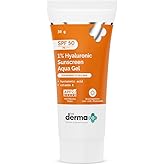## UV Radiation Cataracts: A Rural India Crisis A recent study conducted by researchers at Sankara Nethralaya in Chennai has unveiled a stark reality: high levels of ultraviolet (UV) radiation are contributing significantly to the alarmingly high rates of cataracts among rural populations in India. The research challenges previously held assumptions about cataract prevalence, highlighting a critical disparity between urban and rural areas. While cataract prevalence in urban centers like Chennai hovers around 20%, the study found that in rural areas, this figure is significantly higher, affecting approximately half of the population over 40. ### The Sun’s Silent Threat The study’s findings directly link this disparity to increased exposure to UV radiation. While Chennai, due to its pollution, experiences higher UV levels than surrounding rural districts like Tiruvallur, the researchers emphasize that it’s the cumulative effect of prolonged, unprotected sun exposure in rural lifestyles that contributes most significantly to the problem. Many rural inhabitants work outdoors in agricultural settings, lacking adequate protective measures like hats, sunglasses, or UV-protective clothing. This chronic exposure over decades leads to the gradual development of cataracts. ### Understanding the Mechanism Cataracts, a clouding of the eye’s lens, are a leading cause of blindness worldwide. UV radiation damages the lens proteins, leading to the formation of opacities that interfere with vision. The prolonged, intense exposure experienced by rural populations accelerates this process, resulting in a higher incidence of cataracts at younger ages and more severe cases overall. The study underscores the need for a public health intervention focusing specifically on rural communities. ### Addressing the Problem: A Multi-pronged Approach The implications of this study are far-reaching. The high prevalence of UV radiation-induced cataracts in rural India represents a significant public health burden, impacting productivity, quality of life, and overall societal well-being. Addressing this crisis requires a multi-pronged approach: * **Increased Awareness:** Educational campaigns are crucial to raise awareness about the dangers of UV radiation and the importance of eye protection. These campaigns must be tailored to rural communities, considering literacy levels and cultural factors. * **Accessible Eye Care:** Improving access to affordable and quality eye care services in rural areas is paramount. This includes regular eye screenings, early detection of cataracts, and timely surgical intervention when necessary. * **Protective Measures:** Promoting the use of affordable and effective UV-protective measures, such as wide-brimmed hats, sunglasses with UV protection, and appropriate clothing, is essential. Government initiatives and collaborations with NGOs could play a crucial role in making these readily available. * **Further Research:** Further research is needed to investigate the specific UV radiation levels in different rural regions and to assess the effectiveness of various interventions. This will allow for the development of targeted and effective public health strategies. The findings of this study serve as a wake-up call, highlighting the urgent need to address the disproportionate impact of UV radiation-induced cataracts on rural populations in India. By implementing comprehensive strategies focusing on prevention, early detection, and treatment, we can significantly reduce the burden of this preventable cause of blindness and improve the lives of millions.
UV Radiation Cataracts: Blinding Rural India – New Study
Published on
Posted by
Categories:
The Derma Co 1% Hyaluronic Sunscreen Aqua Gel SPF …
₹257.00 (as of October 15, 2025 11:38 GMT +05:30 – More infoProduct prices and availability are accurate as of the date/time indicated and are subject to change. Any price and availability information displayed on [relevant Amazon Site(s), as applicable] at the time of purchase will apply to the purchase of this product.)


